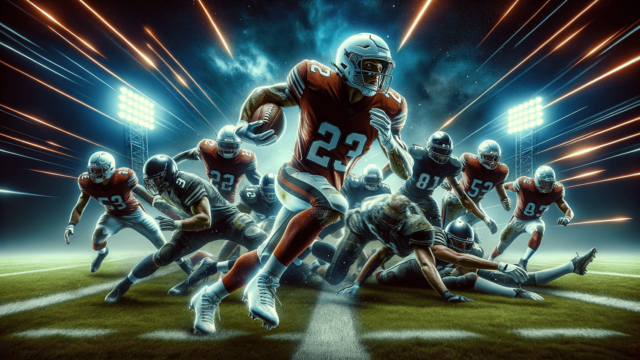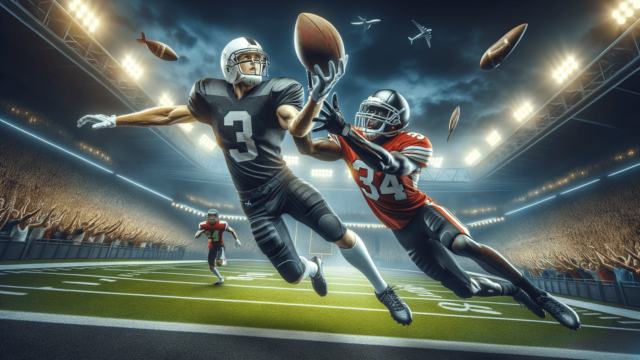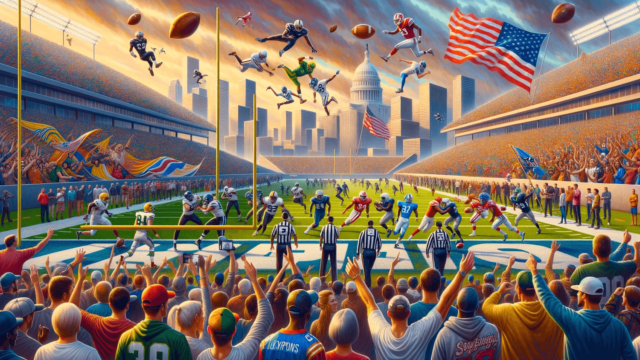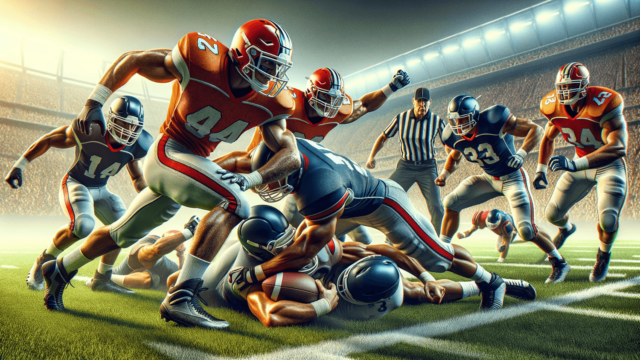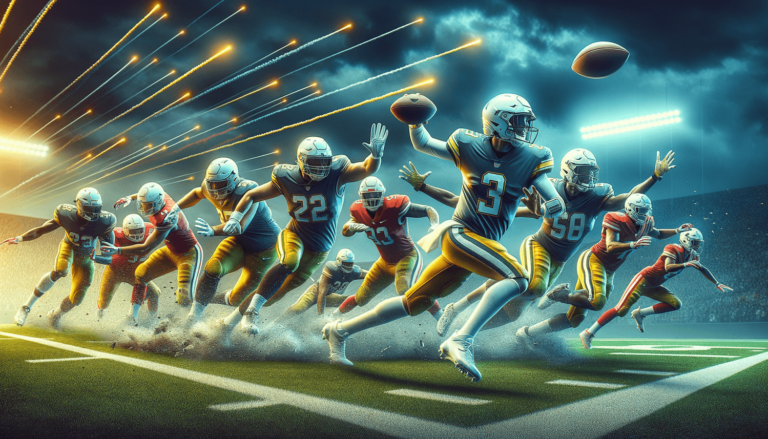
A bubble screen in football is an offensive play where the quarterback quickly throws a short pass to a wide receiver, who moves laterally towards the sideline behind the line of scrimmage. This play is set up by offensive linemen and other receivers blocking downfield defenders, creating a “bubble” for the receiver to exploit and gain yards after the catch.
Understanding the Bubble Screen in Football
A bubble screen is a strategically designed offensive play in football that emphasizes quick passes and evasive movements. It is a high-percentage pass play designed to put the ball in the hands of playmakers who can create yards after the catch. The play is particularly popular in the spread offense and is designed to take advantage of aggressive defenses.
Keys Components of the Bubble Screen
Quarterback’s Role
The quarterback initiates the bubble screen by quickly throwing a short, lateral pass to a wide receiver positioned behind the line of scrimmage. It’s essential that the quarterback accurately delivers the pass, as timing and precision are crucial for the success of this play.
Wide Receiver’s Responsibilities
Upon receiving the pass, the wide receiver’s job is to move laterally towards the sideline while remaining behind the line of scrimmage. This motion allows the receiver to survey the field, identify running lanes, and avoid direct contact with defenders. Once a running lane is found, the receiver accelerates upfield to gain maximum yardage.
Offensive Line and Additional Receiver’s Duties
The offensive linemen, along with other receivers, play a vital role in creating a “bubble” for the targeted wide receiver. Their primary responsibility is to block downfield defenders and provide the targeted receiver with space to run. This bubble both protects the receiver and provides running lanes for them to exploit.
Defending Against the Bubble Screen
Defenses can counter the bubble screen by utilizing disciplined, quick-reacting defenders who can recognize the play and maintain gap responsibility. Additionally, defensive backs and linebackers must be able to read the blocking schemes and navigate through traffic to make a tackle. Proper communication and positioning among defensive players can help minimize the bubble screen’s effectiveness.
Benefits of the Bubble Screen Play
The bubble screen is favored by many football teams due to its numerous benefits on the field. Some of the advantages of this play include:
- High-percentage pass: The short and quick nature of the pass makes it less likely for interceptions or incomplete attempts, providing an easy way to gain yards.
- Utilize playmakers: The bubble screen gets the ball into the hands of a team’s most elusive and skilled players who have the potential to create big plays.
- Combat aggressive defenses: This play exploits and punishes over-aggressive defenses, making them hesitate before attacking the line of scrimmage in future plays.
- Offensive line protection: Since the play is quick, the offensive linemen don’t have to hold their blocks as long, reducing potential penalties and the risk of sacks.
Incorporating Bubble Screen Variations
Although the traditional bubble screen is a staple in many football playbooks, effective teams will often incorporate variations of this play to keep defenses guessing. Some popular variations include:
Double Bubble Screen
This play involves setting up bubble screens on both sides of the field. The quarterback reads the defense pre-snap or during the play and decides which of the two receivers to target based on the defense’s alignment and coverage.
Stacked Receiver Formation
In this formation, two wide receivers align closely together, one behind the other. This alignment creates confusion among defensive players and allows the targeted receiver to slip behind the blocks more easily, which can be highly effective when running a bubble screen play.
Play-action Bubble Screen
The play-action bubble screen combines a fake running play with the bubble screen element. The quarterback fakes a handoff to a running back before throwing the ball to the wide receiver, drawing the linebackers and safeties towards the line of scrimmage and making it harder for defenders to track the targeted receiver.
Remember, while the bubble screen may be an effective and popular play, for your football team to be successful on the field, diverse offensive strategies combined with proper execution are essential. By understanding the fundamentals, variations, and benefits of the bubble screen, you enhance your football knowledge and advance towards outsmarting defenses.
FAQ Section: Bubble Screen Play in Football
This FAQ section aims to address the most common questions related to the bubble screen play in football. Learn more about its effectiveness, potential drawbacks, and additional tips to enhance your understanding of this popular play.
How effectively does the bubble screen work against different defensive coverages?
The bubble screen works best against man-to-man and aggressive blitzing defenses. When facing zone coverages, it may be less effective, as defenders tend to maintain their gap assignments better. However, effective pre-snap reads and decision-making by the quarterback can still exploit weaknesses in zone coverages.
What are the potential drawbacks of using the bubble screen too often?
Over-reliance on the bubble screen play can lead to predictability and allow defenses to adjust their formations or strategies to counter it effectively. Additionally, if blockers fail to maintain their assignments, the play may result in a loss of yards or minimal gains.
Can the bubble screen be used with other types of screen plays?
Yes, the bubble screen can be combined with other screen play concepts, such as running back screens or tight end screens. This adds variety to the offense and keeps the defense guessing, making it more challenging for them to defend against your team’s strategies.
Is the bubble screen effective for all levels of football, including youth and recreational leagues?
The bubble screen can be an effective play at all levels of football, as long as the team’s coaching staff properly teaches and emphasizes the fundamentals, such as proper blocking techniques, quarterback accuracy, and wide receiver decision-making. Good execution of the play can lead to success even in youth and recreational leagues.
What additional tips can you provide to enhance the bubble screen’s effectiveness?
To improve the bubble screen’s effectiveness, ensure proper communication among the offensive players and implement variations of the play. Regularly practice the fundamentals, such as pass accuracy, receiver footwork, and effective blocking, and analyze game film to identify weaknesses in the opposing team’s defensive strategies and formations.
Featured Posts
- No pillar pages found.
